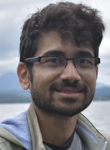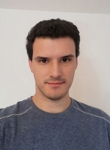Postdocs

Arpit Das
Postdoctoral Researcher
University of Edinburgh
Arpit was born in Rourkela, India. He did his
undergraduate and postgraduate studies, majoring in
Physics, from IISER Kolkata, India. He obtained his PhD
in mathematical sciences from Durham University, UK. He
is currently a postdoc at the School of Maths,
University of Edinburgh, UK. His primary research
interests include understanding applications of
generalized symmetries in building effective field
theories using techniques from hydrodynamics and
holography. He also works on studying entanglement
properties of 2D CFTs pertaining to their internal
symmetries. Additionally, he has also been involved in
the holomorphic modular bootstrap program for rational
CFTs.

Petar Tadić
Research Associate
Heriot-Watt University
Petar was born in Montenegro. He obtained his Bachelor's
degree from the University of Belgrade (2013-2017) and
completed his Master's studies at the University of
Oxford (2017-2018), under the supervision of Andrei
Starinets. Petar pursued his PhD at Trinity College
Dublin (2018-2021), where he worked under the
supervision of Manuela Kulaxizi. Before joining
Heriot-Watt University, he was a postdoctoral researcher
at Yale University (2021-2024). His research interests
lie in exploring the space and dynamics of quantum field
theories using various methods such as perturbative
expansion, (conformal) bootstrap, AdS/CFT duality, and
hydrodynamic expansion.

Boyang Yu
Postdoctoral Researcher
University of Edinburgh
Boyang was born in Jilin, China. He obtained his
Bachelor’s degree in Physics from Tsinghua University in
2016 and his Ph.D. in Mathematics from the Yau
Mathematical Sciences Center, Tsinghua University, in
2021 under the supervision of Professor Wei Song. He
then held postdoctoral position at Peking University
from 2021 to 2024 before joining the University of
Edinburgh as a postdoctoral researcher. His research
focuses on semiclassical AdS3 gravity, black hole
physics, complexity, and their implications in AdS/CFT
correspondence.